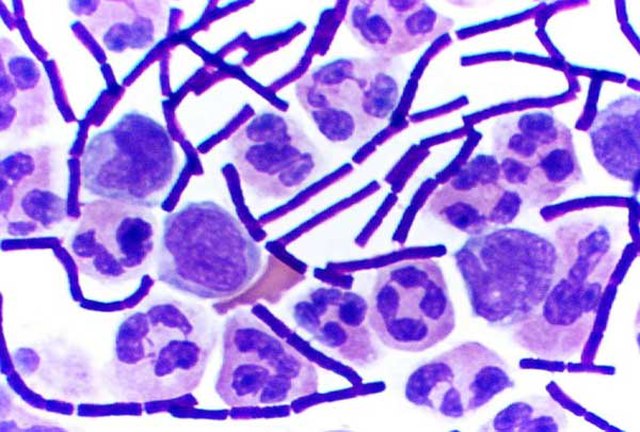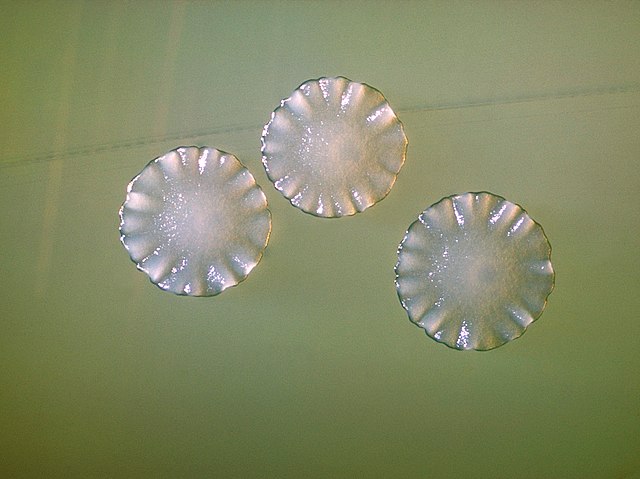Bacillus anthracis is a gram-positive and rod-shaped bacterium that causes anthrax, a deadly disease to livestock and, occasionally, to humans. It is the only permanent (obligate) pathogen within the genus Bacillus. Its infection is a type of zoonosis, as it is transmitted from animals to humans. It was discovered by a German physician Robert Koch in 1876, and became the first bacterium to be experimentally shown as a pathogen. The discovery was also the first scientific evidence for the germ theory of diseases.

CD14 and Mac-1 work together to increase the macrophage internalization of B. anthracis spores. (a) CD14 and TLR2 work in close proximity to propagate the activation signal. Mac-1 starts in a closed confirmation which keeps the integrin from binding the spores, keeping them out of the cell. (b) CD14 binds the rhamnose residues on the BclA of the exosporium leading to TLR2-mediated activation of PI3K. (c) Activation of PI3K pushes Mac-1 into its open conformation so the spore can be bound and internalized (information from Oliva
CapD protein crystal structure of B. anthracis
In bacteriology, gram-positive bacteria are bacteria that give a positive result in the Gram stain test, which is traditionally used to quickly classify bacteria into two broad categories according to their type of cell wall.
Rod-shaped gram-positive Bacillus anthracis bacteria in a cerebrospinal fluid sample stand out from round white blood cells, which also accept the crystal violet stain.
Violet-stained gram-positive cocci and pink-stained gram-negative bacilli
Colonies of a gram-positive pathogen of the oral cavity, Actinomyces sp.





